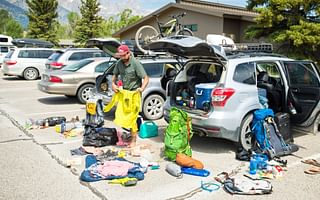🚗 The Ultimate Guide to Preparing Your Vehicle for Beach Driving 🏖️
Embarking on a beach driving adventure can be an exhilarating experience. However, the success of your trip largely depends on how well you prepare your vehicle for the sandy terrain. Our step-by-step guide above provides a comprehensive overview of how to get your vehicle beach-ready. But let's delve a bit deeper into these crucial steps and why they matter.
Understanding Your Vehicle's Beach Readiness
Before you hit the sand, it's essential to understand your vehicle's capabilities and limitations. This includes inspecting your vehicle to ensure everything is in working order. A well-maintained vehicle is less likely to encounter problems on the beach, making your trip safer and more enjoyable. For more information on vehicle requirements and preparations, check out our detailed guide here.
Mastering Tire Pressure
Adjusting your tire pressure is not just a tip—it's a necessity for beach driving. Lower tire pressure increases your vehicle's traction on the sand, preventing it from getting stuck. But remember, the ideal tire pressure can vary based on your vehicle and the sand conditions. Learn more about tire pressure and other beach driving hacks here.
Preparing for the Unexpected
Even with the best preparations, there's always a chance of getting stuck in the sand. That's why it's crucial to have recovery gear on hand. From shovels to tire traction mats and tow ropes, these tools can be a lifesaver in tricky situations. Discover more about essential beach driving safety tips here.
Keeping Your Vehicle Clean
Finally, remember to clean your vehicle thoroughly before and after your beach drive. Salt and sand can cause corrosion if left on your vehicle, leading to costly repairs down the line. To ensure you're not overlooking any crucial cleaning steps, check out our guide on driving on the sand of beaches.
With these steps in mind, you're well on your way to an unforgettable beach driving adventure. Remember, preparation is key. So take the time to get your vehicle beach-ready and enjoy the ride!

















